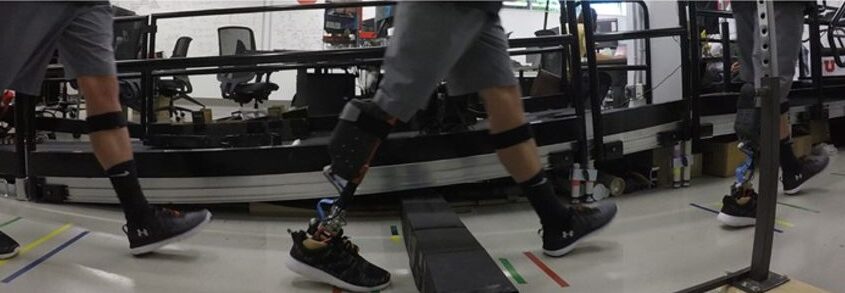The proposed controller relied on an algorithm to continuously change the maximum knee flexion angle and the swing duration in harmony with the user’s residual limb. The researchers used a minimum-jerk trajectory to continuously adapt the swing while maximizing smoothness. Experiments were performed on six individuals: three with transfemoral amputations and three without amputation. The subjects tested the device by walking on a treadmill with obstacles of varying sizes being thrown in their path or stepping over obstacles in the lab.
The results showed that the proposed control approach allowed for voluntary control of foot clearance, which is necessary to negotiate environmental barriers and may provide prosthesis users with functionality that is not currently available which may facilitate real world ambulation, according to the study’s authors.
Coauthor and assistant professor of biomedical engineering at the University of Utah, Tommaso Lenzi, PhD, told Inverse that the artificial intelligence controller works by collecting information about the user’s hip movements and uses that to reinterpret the motion of the residual limb.
“When we walk, no two steps are the same,” said Lenzi. If we encounter an obstacle, we lift our foot up and then forward to cross over it without stumbling. All these movements may look very different but have one thing in common: Out joints move in synchrony and maximize smoothness. This is the principle that our AI system uses. One thousand times a second, the AI looks at the movement of the residual limb and plans new movements of the bionic joints that optimize smoothness, mimicking the biological leg.”
In a video released with the study, the researchers showed that participants using the prosthesis cleared obstacles of increasing size much easier than participants using passive prostheses and with a similar success rate to their non-amputee counterparts, but slightly slower.
“Moving from the lab to real life is not only a scientific challenge but also an engineering challenge,” said Lenzi. “AI and neural interfaces are fundamental but are not going to succeed without strong, efficient, and lightweight designs for these bionic legs. There is still a lot we need to do for the latter.”
Sources: O&P Edge, Inverse, Science Robotics

